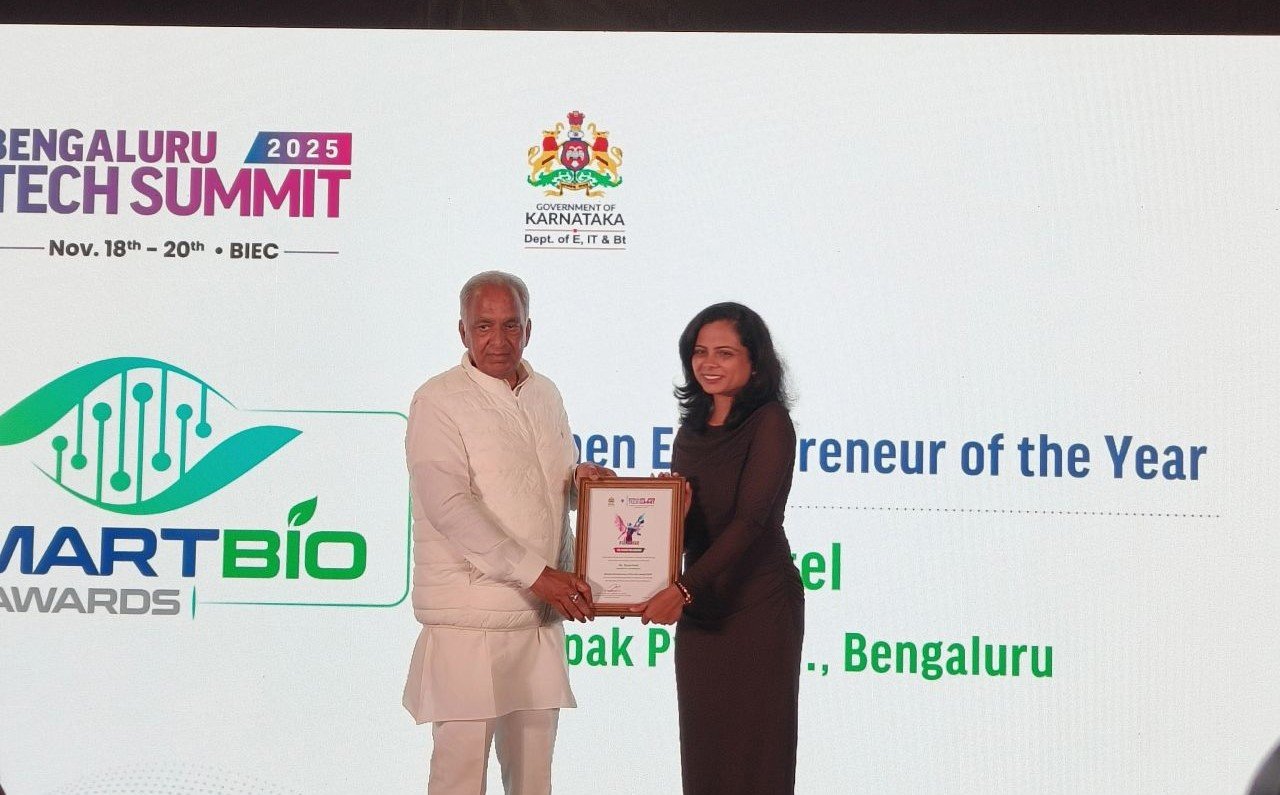Quest for new plant drugs gains momentum
September 04, 2007 | Tuesday | News
New Page 1
Quest for new plant drugs gains momentum
|

Prof. R Uma Shaanker |
The School of Ecology and Conservation, with support from the DBT, has
embarked on a program to identify alternate and high yielding sources of
Camptothecin (CPT), an important anti-cancer compound, from among the plant
resources of the Western Ghats. The results of this work may have implications
in developing sustainable models for the extraction of CPT.
In countries like China, Japan, Germany and India, there is a
great deal of interest in the search for new and useful drugs from higher
plants. To a certain extent, virtually every country seems to be active in this
search. However, in the light of its size and resources, the US must be
considered as an underdeveloped country with regards to productivity and
programs designed to study higher plants as sources of new drugs, both in terms
of industrial and university-sponsored research.
The National Cancer Institute in the US has tested 35,000
species of higher plants for anti-cancer activity. Many of these have shown
reproducible anti-cancer effects, and the active principles have been extracted
from most of these and their structures determined. However, none of these new
drugs have yet been found to be safe and effective enough to be used routinely
in humans. The question then arises, could any of these 35,000 species of plants
contain drugs effective for other disease states, such as arthritis, high blood
pressure, acquired immune deficiency syndrome (AIDS), or heart trouble? Of
course they could, but they must be subjected to other appropriate tests to
determine these effects. In reality, there are only a handful of plants that
have been exhaustively studied for their potential value as a source of drugs,
i.e., tested for several effects instead of just only one. Thus, it is safe to
presume that the entire flora of the world has not been systemically studied to
determine if its constituent species contain potentially useful drugs. This is a
sad commentary when one considers that interest in plants as a source of drugs
started at the beginning of the nineteenth century and that technology and
science have grown dramatically since that time.
Various avenues
There are many approaches to the search for new biologically
active principles in higher plants .One can simply look for new chemical
constituents and hope to find a biologist who is willing to test each substance
with whatever pharmacological test is available. This is not considered to be a
very valid approach. A second approach is simply to collect every readily
available plant, prepare extracts, and test each extract for one or more types
of pharmacological activity. This random collection, broad screening method is a
reasonable approach that eventually should produce useful drugs, but it is
contingent on the availability of adequate funding and appropriate predictable
bioassay systems. The last major useful drugs to have reached the marketplace
based on this approach are the so-called vinca alkaloids, vincristine sulfate (leurocristine)
and vinblastine sulfate (vincaleukoblastine). Vincristine is the drug of choice
for the treatment of childhood leukemia; vinblastine is a secondary drug for the
treatment of Hodgkin's disease and other neoplasms.
Vincristine was discovered by Gordon H. Svoboda at the Lilly
Research Laboratories. In January 1958, Svoboda submitted an extract of the
Madagascan periwinkle plant Catharanthus roseus to a pharmacological screening
program at Lilly. This was the fortieth plant that he selected for inclusion in
the program. Vincristine was marketed in the US in 1963, less than five years
after a crude extract of C. roseus was observed to have anti-tumor activity. In
1985, total domestic and international sales of vincristine and vinblastine were
approximately $100 million, 88 percent of which was profit for the company.
This discovery of new drugs from higher plants is one of the
few that has evolved from a random-selection broad pharmacological screening
program. For example, in the very expensive research and development effort
undertaken by the National Cancer Institute, not one useful drug has emerged.
A cause for concern
Higher plants have been described as chemical factories that
are capable of synthesizing unlimited numbers of highly complex and unusual
chemical substances whose structures could escape the imagination of synthetic
chemists forever.
One of the widely and highly demanded biochemical
intermediate in the recent past is shikimic acid – an important precursor for
the synthesis of aromatic acids. The focus on shikimic acid has immensely
increased since it is the key material of Tamiflu, a remedy against avian flu
caused by H5N1 virus. Shikimic acid is used to make a generic drug called
Oseltamivir - best known commercially as Tamiflu - which is used to fight many
types of flu viruses. Some health experts believe that this and similar
antiviral drugs could help save lives by slowing the spread of the virus in the
absence of a bird flu vaccine, which is still in development.
Shikimic acid is found naturally in plants and can yield
various esters and salts like inositol and quinic acid. Shikimic acid is widely
used as a chiral building block for the synthesis of pharmaceuticals, an
important example being Tamiflu. At the moment, the most satisfactory commercial
route to extraction of shikimic acid is from fruits of Chinese star anise (Illicium
verum Hook f., Illiciaceae). However, this plant, a small tree up to 10 meters
tall, is extremely difficult to cultivate and also attains maturity at a very
slow rate, in that it flowers only after 6 years. With shikimic acid being used
in bulk in various industrial sectors, it becomes highly essential to find new
sources to meet the demand. There is a skyrocketing demand for Tamiflu, but some
experts fear there won't be enough of the drug to treat everyone if a
worldwide pandemic occurs. The supply problem resides in the drug's source.
Novel venture
At School of Ecology and Conservation, University of
Agricultural Sciences, GKVK, Bangalore, currently a team led by Prof. R Uma
Shaankar is prospecting for indigenous sources of shikimic acid that can meet
domestic and international market needs. Following novel approaches based on
phylogenetic leads, they have screened over 240 plant species in the Western
Ghats.
"We have completed screening about 240 species. Only 4
of the species yielded more than one percent of shikimic acid. Two of these
species yield shikimic acid in excess of 4 percent and up to 7 percent. The
results have enormous implications to exploit these resources for meeting the
shikimic acid requirements, nationally and internationally," said Prof. Uma
Shankar.
Camptothecin (CPT), a monoterpene pentacyclic indole alkaloid
is an important anti-cancer compound found in several plant species. Based on
its property to inhibit DNA topoisomerase I, several water-soluble anti-cancer
drug formulations (e.g. Topotecan and Irinotecan) are currently being
semi-synthesized from natural camptothecins. Currently the major source of CPT
is from Campotheca acuminata, a Chinese plant. The success of these drugs has
propelled the demand for CPT worldwide. Among the plants reported to contain CPT,
the highest concentration (about 0.3 percent on a dry weight basis) has been
reported from Nothapodytes nimmoniana (Govindachari and Viswanathan, 1979), a
plant available in the Western Ghats. With the rising demand for CPT, it is
imperative that efforts are made to facilitate the sustainable supply of CPT
without jeopardizing the natural populations of N. nimmoniana.
The School of Ecology and Conservation, with support from the
Department of Biotechnology, has embarked on a program to identify alternate and
high yielding sources of CPT from among the plant resources of the Western Ghats.
The results of this work may have implications in developing sustainable models
for the extraction of CPT.
"We have discovered two new plant sources for the
production of CPT. These are very high yielding and could potentially replace
the current major source of CPT, the Chinese plant. Obviously this finding can
have profound economic implications. We have also isolated several strains of
endophytic fungi from stem bark of individuals of Nothapodytes nimmoniana and
have showed that these also produce CPT, though in smaller quantity. This
finding is also potentially very interesting from the point of commercial
applications. Using ecological niche models, we have for the first time also
been able to model and predict the potential sites and populations that might
accumulate higher levels of CPT. This finding has immense commercial implication
for bioprospectors" said Prof. R Uma Shaanker.
Several industries have already evinced interest in the
ongoing work and the possible scale-up that can make these findings commercially
viable.
Therefore future programs of drug development from higher
plants should include a careful evaluation of historical as well as current
claims of the effectiveness of plants as drugs from alien cultures. Such
information is rapidly disappearing as our own culture and ideas permeate the
less developed countries of the world where there remains a heavy dependence on
plants as sources of drugs.
"Industry collaboration is very useful for any research.
It is the industry which needs to utilize these research findings and make it
commercially available. In the US, 79 percent of the geneticists have industry
tie-ups. Funding is very good in India but there is lack of good research. There
are very few companies in India with a good R&D unit," Prof. R Uma
Shaanker said.
Jahanara Parveen










